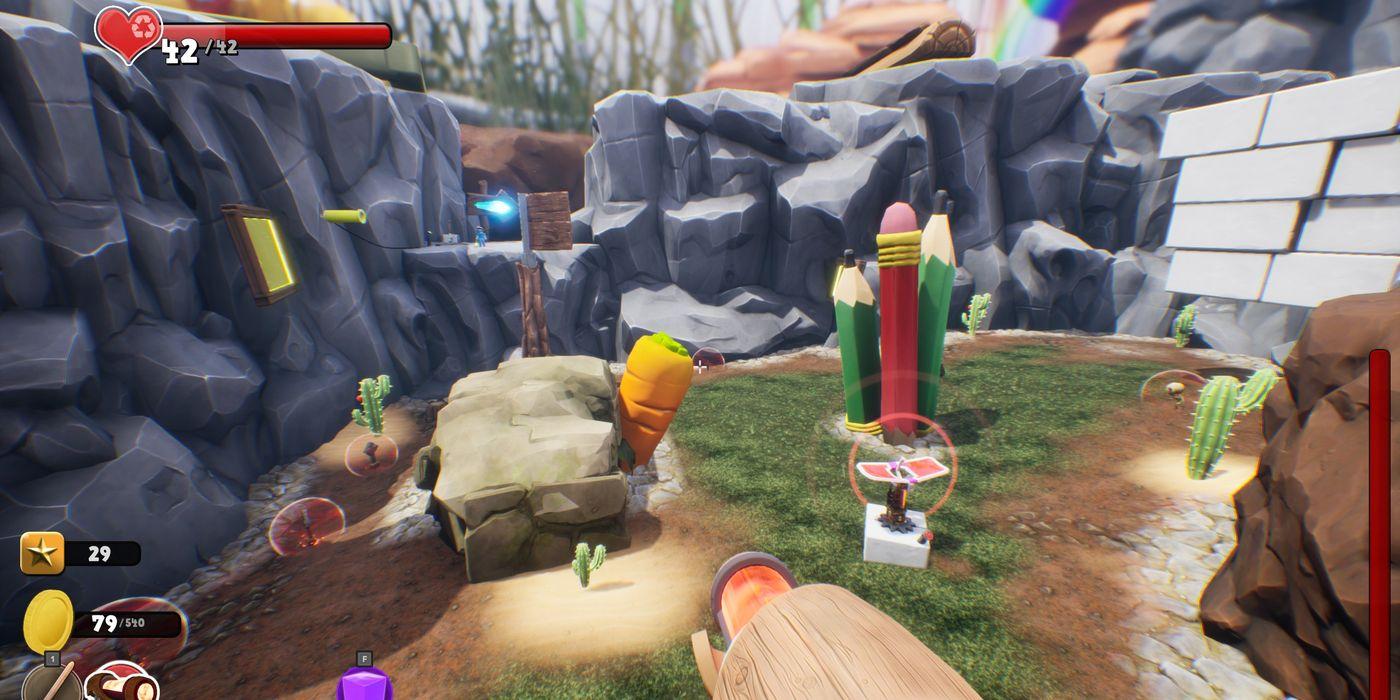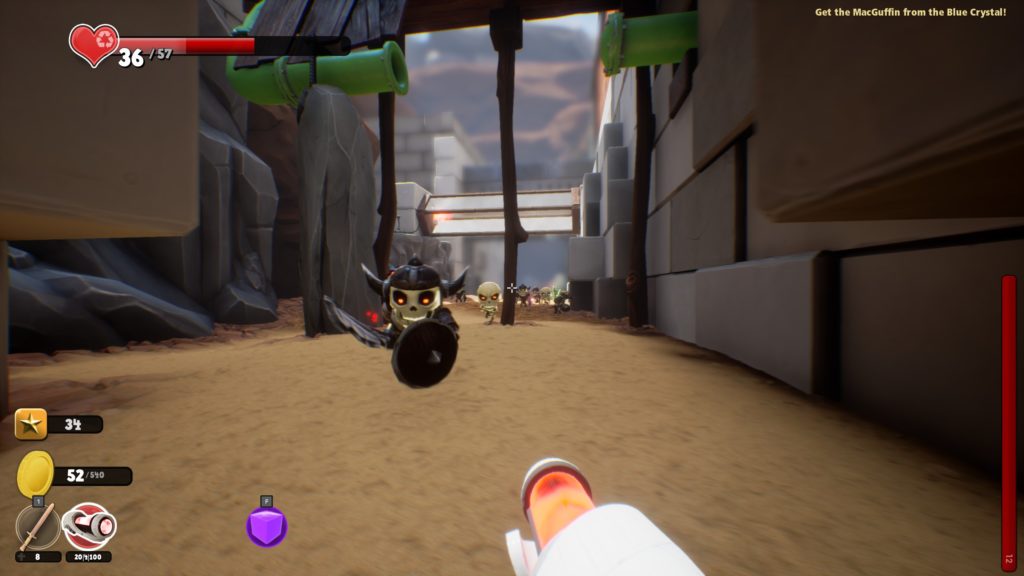
May
Supraland – Review
In Supraland, you solve puzzles and fight baddies in a miniature world. Did it turn out to be small-time, or a big deal? Here’s what we think.
The moment I came to appreciate Supraland was when I realised that it has no map or compass.
It’s a simple omission that, by itself, elevates the exploration in a way that bigger games would struggle with. Imagine! A game where you must draw your own mental map and use physical hints to navigate! It’s almost as if you have to explore!

It might be impossible to describe Supraland without mentioning its publicised inspirations. Here’s the pitch—it’s one part Portal, one part Metroid, and one part Zelda, all blended by a lone developer into a 10-to-20-hour adventure.
Lofty titles. But these aren’t just inspirations, they are the literal design pillars on which Supraland is built.
The Portal pillar stands the most dominant here. It’s a first-person puzzle game at heart, where you’re taught the physical logic of the sandbox world you inhabit. Then, you’re (quite literally) tossed into areas that seem confusing, areas that make you go “Well, now how am I going to get out of this one?”. But with a bit of experimentation, observation, and association, you manipulate the environment and voila, a jump pad is activated. Time for another toss.
The Metroid pillar complements the Portal pillar by determining how the exploration and progress works. You pick up various tools over the course of the game, tools that you use to both solve puzzles and access new paths in the world that you couldn’t previously access.
The Zelda pillar shares the ability-assisted exploration of Metroid, but you also have RPG elements you’ll need, such as health, weapons, enemies to fight, coins to collect, and upgrades to spend those coins on.

There really isn’t much in the way of a story. The game takes place in a miniature world built in a sandbox by a young boy who occasionally appears in the game’s skybox like a frozen eldritch horror. You play as the son of the king of the ‘Red’ stick people, who discover one day that they have no water anymore. The culprits seem to be the hostile ‘Blue’ stick people, and now it’s up to you to figure out what’s going on. It’s a hodgepodge of set dressing, self-referential humour, and memes.
Thankfully, the story is not something that you think too much about in the game. Instead, Supraland keeps you occupied with its excellent puzzles and level design.

Solving puzzles in Supraland often feels like learning a language: you are taught the basics, and then thrown into an area that you must first ‘read’. Then you spitball a little, join the dots here and there, experiment with a few wacky ideas, and the mystery is unfurled, revealing a new area.
And then? Another puzzle is waiting for you, and you’re back to investigating how it can be solved. For a game that came across as quite janky at the start, this puzzle-after-puzzle loop made it quite difficult to put down.

The same can’t be said for the game’s combat, which is bad to the point of bafflement. The sword combat feels like flailing your hands in front of you, and while things get better with the gun, you still take so much damage from enemies that fighting is just no fun at all. The point at which it all got tolerable was when, ironically, I resigned myself to die once or twice in each encounter. The killed enemies don’t return when you respawn, so might as well, right?
But after you clear an area, there is a chance that an entire horde of enemies will respawn if you so much as take a trip around the corner. This got in the way of my puzzle-solving flow more than a few times, which made me keep asking “Why?” in every combat encounter. The enemies aren’t particularly justified by the story anyway, so why do I have to deal with them?

With that unpleasant diversion of combat done, let’s go back to the puzzles now. The Portal and Metroid combination throws up some interesting challenges for the player trying to ‘figure the game out’ on a meta level.
For instance, it was often tempting to wonder “Did I miss a gizmo I need to get past this level?”. It even frustrated me a few times in the early game when I obstinately insisted on solving a puzzle within a given area, and with given tools. Then, I would backtrack just a little and everything would fall into place.

Supraland loves to play with your meta thinking. Things I thought would be impossible in the game’s logic ended up not only possible, but were required to progress through the game. It made me think of how much emphasis Arkane Studios placed on the emergent gameplay of Dishonored—Supraland not only nailed that feeling for me, but it seemed even intentionally designed to evoke that feeling.
Hints of this can be found throughout the game’s cobbled-together design. I’ll paint an early-game example. The game gives you a ‘Force Cube’ to spawn and use as you see fit—think of it as a summonable Companion Cube from Portal. It glows in a ridiculously bright purple, which really fits with the other bright, glowing colours the game is fond of. Turns out, the game has no flashlight, and it actually encourages you to hold down the cube-spawning key to light up your environment.
Most other developers would have tried to establish some kind of story logic to this, but Supraland just doesn’t care. It’s a design philosophy that feels somewhat akin to the bizarre and gameplay-serving world of Mario.

I don’t think it’s a stretch to say that Supraland is a modern classic in the puzzle genre. It’s approachable, meaty, colourful, and its puzzles are very, very clever. Don’t expect anything more, and you stand to have a good time.
Developer: Supra Games
Country of Origin: Germany
Publisher: Supra Games
Release Date: 5 April 2019 (PC)
This review of Supraland is based on a copy provided by the developer.
Check out more reviews from Into Indie Games.com!
